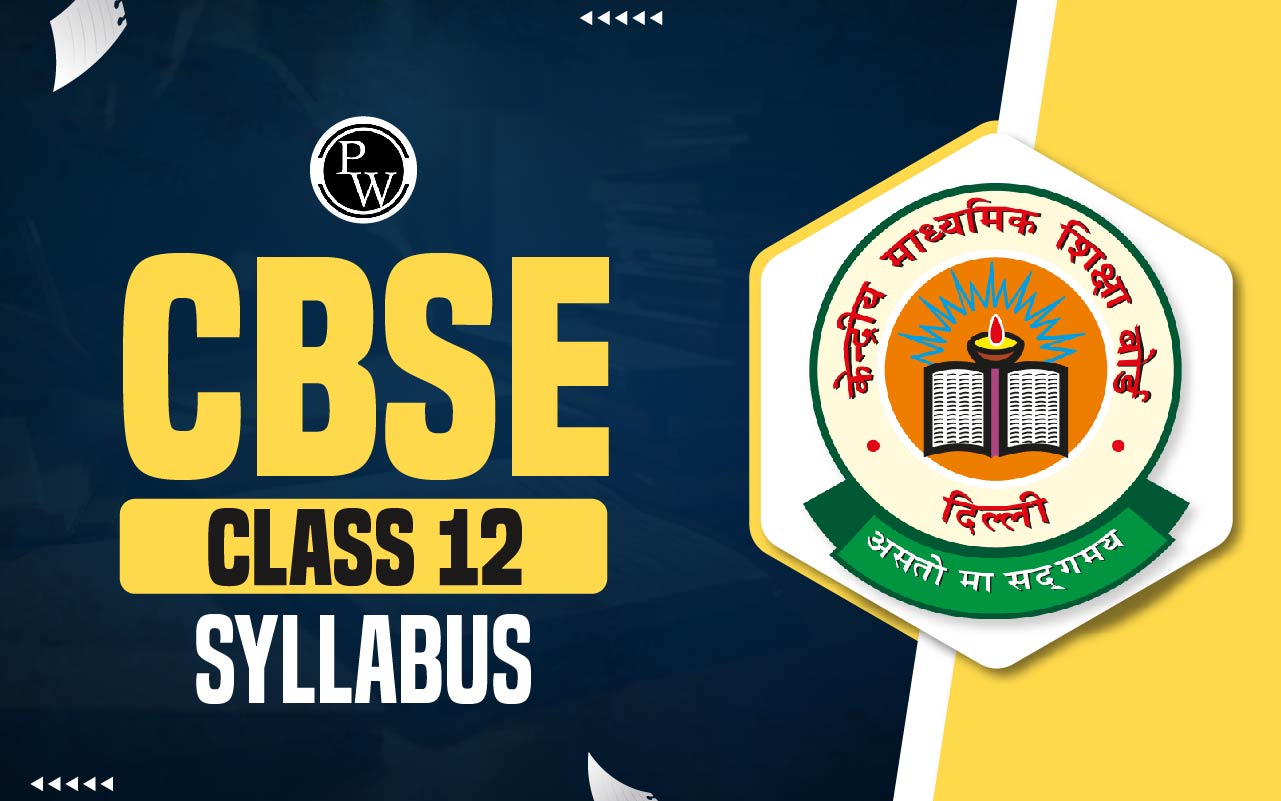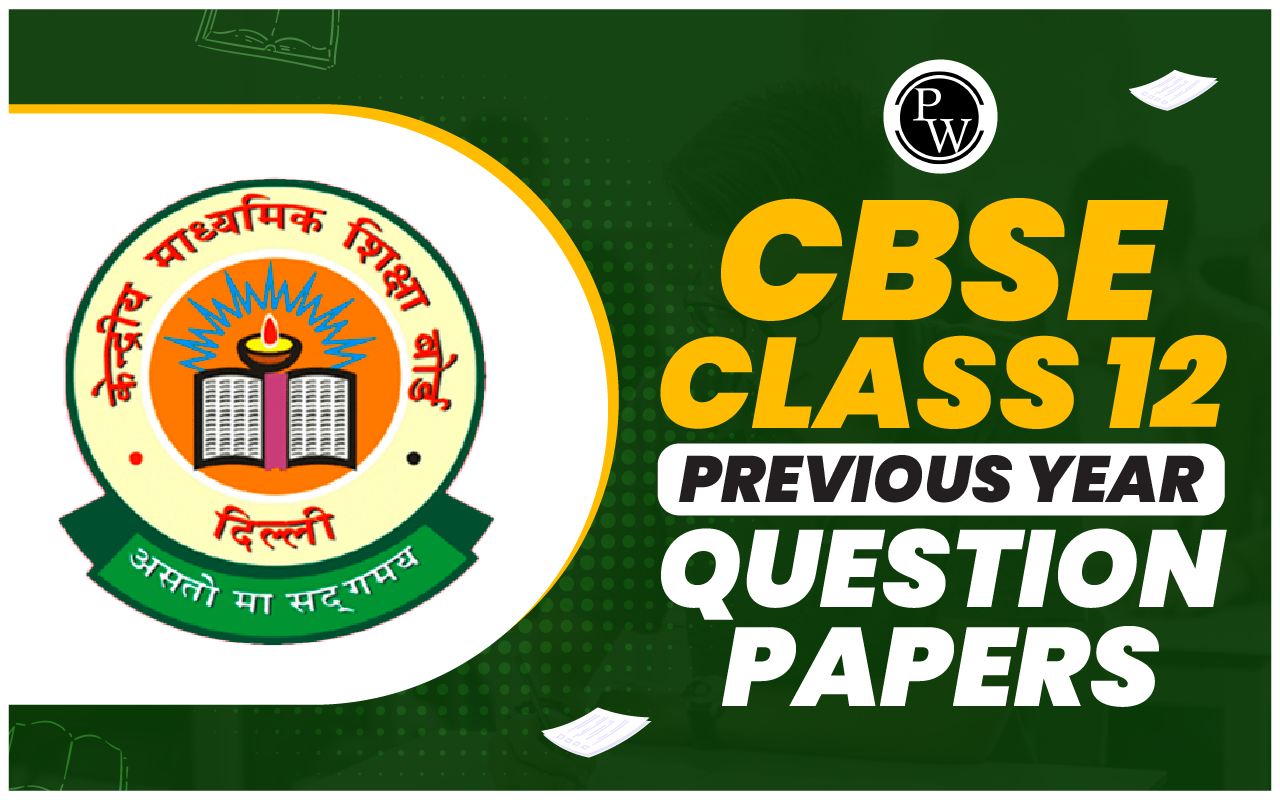
NCERT Solutions for Class 12 Maths Chapter 5: The NCERT Solutions for Class 12 Maths Chapter 5 Continuity and Differentiability offer answers to all the questions in the chapter, covering all exercises and miscellaneous exercises. These solutions are thoughtfully compiled, taking into account the latest CBSE Syllabus. Students can easily access these solutions to strengthen their understanding of Class 12 Maths.
The subject experts have crafted these solutions to assist students in solving problems effectively. Additionally, all solutions align with the most recent CBSE Syllabus. Students can download the PDF of the NCERT Solutions for Class 12 Maths Chapter 5 from the provided links.NCERT Solutions for Class 12 Maths Chapter 5 Overview
NCERT Class 12 Maths Chapter 5, titled "Continuity and Differentiability," delves into fundamental concepts that form the backbone of calculus. The chapter emphasises the smoothness and behaviour of functions through the concepts of continuity and differentiability. Continuity explores the uninterrupted nature of functions, focusing on understanding where functions are continuous or exhibit points of discontinuity. This is vital in analysing real-world scenarios, such as physical processes or economic models. Differentiability, the second key theme, delves into the rate at which a function changes. The chapter explores the concept of derivatives, offering insights into the slope of a curve and the instantaneous rate of change. These derivatives play a crucial role in predicting trends and behaviours in various fields, from physics to economics.NCERT Solutions for Class 12 Maths Chapter 1
NCERT Solutions for Class 12 Maths Chapter 5 Continuity and Differentiability Exercises
NCERT Solutions for Class 12 Maths Chapter 5 Continuity and Differentiability have been given in a detailed exercise-wise form in the table below:| NCERT Solutions for Class 12 Maths Chapter 5 Continuity and Differentiability Exercises |
|---|
| Exercise 5.1 |
| Exercise 5.2 |
| Exercise 5.3 |
| Exercise 5.4 |
| Exercise 5.5 |
| Exercise 5.6 |
| Exercise 5.7 |
| Exercise 5.8 |
| Miscellaneous Exercise |
NCERT Solutions for Class 12 Maths Chapter 5 - Chapter at a Glance
NCERT Solutions for Class 12 Maths Chapter 5 provide a comprehensive exploration of Continuity and Differentiability, logarithms, and advanced theorems. Building on previous knowledge, the chapter covers essential concepts, including the algebra of continuous functions, derivatives of specific standard functions, and theorems related to differentiability. The chapter is divided into sections with exercises to reinforce learning. 5.1 Introduction: Introduces Continuity and Differentiability, logarithms, and advanced theorems. Covers concepts from the previous class and explores new topics like exponential and logarithmic functions.NCERT Solutions for Class 12 Maths Chapter 2
5.2 Continuity: Discusses the rigorous formulation of continuous functions, emphasising the algebra of continuous functions. Explores uninterrupted functions and covers essential definitions, theorems, and their proofs. NCERT Solutions for Class 12 Maths Chapter 5 Exercise 5.1: Includes 34 questions (10 short and 24 long) to practise and reinforce understanding. 5.3 Differentiability: Recalls facts from the previous class, covers derivatives of specific standard functions, and introduces theorems related to differentiability. Emphasises the relationship between differentiability and continuity.NCERT Solutions for Class 12 Maths Chapter 3
NCERT Solutions for Class 12 Maths Chapter 5 Exercise 5.2: Consists of 10 questions (2 short and 8 long) for practice. NCERT Solutions for Class 12 Maths Chapter 5 Exercise 5.3: Contains 15 questions (9 short and 6 long) focusing on derivatives of implicit functions and inverse trigonometric functions. 5.4 Exponential and Logarithmic Functions: Explores various classes of functions, including polynomial, rational, and trigonometric functions. Introduces a new class of functions – exponential and logarithmic functions – emphasising motivational statements and precise proofs. NCERT Solutions for Class 12 Maths Chapter 5 Exercise 5.4: Involves 10 questions (5 short and 5 long) for practice. 5.5 Logarithmic Differentiation: Teaches differentiation of specific functions given in specific forms, using practical examples more than theory for a hands-on approach.NCERT Solutions for Class 12 Maths Chapter 4
NCERT Solutions for Class 12 Maths Chapter 5 Exercise 5.5: Comprises 18 questions (4 short and 14 long) with a practical focus. 5.6 Derivatives of Functions in Parametric Forms: Explains the relation between variables in parametric forms, providing examples to enhance understanding. NCERT Solutions for Class 12 Maths Chapter 5 Exercise 5.6: Consists of 11 questions (1 short and 1 long) for practice. 5.7 Second Order Derivative: Further explores working with second-order derivatives, emphasising practical examples over theory. NCERT Solutions for Class 12 Maths Chapter 5 Exercise 5.7: Involves 17 questions (10 short and 7 long) for practice. 5.8 Mean Value Theorem: Covers fundamental results in Calculus without proof, with a focus on the Mean Value Theorem's geometric interpretation and functionality. Provides examples to facilitate comprehension.NCERT Solutions for Class 12 Maths Chapter 6
Benefits of NCERT Solutions for Class 12 Maths Chapter 5
NCERT Solutions for Class 12 Maths Chapter 5, focusing on "Continuity and Differentiability," offer numerous benefits to students:- Conceptual Clarity: The solutions provide clear explanations and step-by-step procedures, enhancing students' understanding of the fundamental concepts related to continuity and differentiability.
- Comprehensive Coverage: NCERT Solutions cover all exercises and miscellaneous problems, ensuring that students are well-prepared for exams and have a thorough grasp of the chapter.
- CBSE Syllabus Alignment: The solutions are meticulously crafted, keeping in mind the latest CBSE Syllabus. This alignment ensures that students focus on topics relevant to their examinations.
- Guidance by Experts: Developed by subject experts, these solutions offer valuable insights and alternate problem-solving approaches. This guidance is especially beneficial for students seeking additional clarity.
- Effective Exam Preparation: With comprehensive coverage and detailed explanations, NCERT Solutions serve as a valuable resource for exam preparation, allowing students to practise a wide range of problems and assess their understanding.
- Application Understanding: The solutions delve into real-world applications of continuity and differentiability, demonstrating how these mathematical concepts find relevance in various fields like physics, economics, and engineering.
- Accessible Learning Material: Available in both digital and print formats, these solutions are easily accessible to all students, promoting inclusivity in education. This accessibility ensures that students can study at their own pace.
- Systematic Problem Solving: The step-by-step solutions encourage systematic problem-solving approaches, helping students develop a structured methodology to tackle mathematical problems.
- Foundation for Advanced Studies: By mastering the concepts of continuity and differentiability at the Class 12 level, students lay a strong foundation for advanced calculus and higher studies in mathematics and related fields.
- Self-Assessment Opportunities: The solutions include self-assessment exercises that allow students to evaluate their understanding and identify areas for improvement, contributing to a more personalised learning experience.
- Enhanced Confidence: Regular practice with NCERT Solutions builds confidence in students, empowering them to approach mathematical problems with assurance and accuracy.
- Free Resource: As part of the NCERT curriculum, these solutions are often freely available, ensuring that financial constraints do not hinder students from accessing quality learning materials.
CBSE Class 12 Previous Year Question Papers
How to Prepare With NCERT Solutions for Class 12 Maths Chapter 5
Preparing with NCERT Solutions for Class 12 Maths Chapter 5, focusing on "Continuity and Differentiability," can be a strategic and effective approach. Here's a detailed guide on how to prepare using these solutions:- Understand the Syllabus: Start by understanding the Class 12 Maths Chapter 5 syllabus. Identify the key topics and concepts related to continuity and differentiability.
- Read the NCERT Textbook: Thoroughly read the NCERT textbook for Chapter 5. Understand the theoretical concepts and examples provided to build a strong foundation.
- Use NCERT Solutions: Begin solving problems using NCERT Solutions. Work through each exercise and the miscellaneous problems, following the step-by-step solutions provided.
- Practice Regularly: Mathematics requires consistent practice. Set aside regular time for practising problems related to continuity and differentiability to reinforce your learning.
- Self-Assessment: Utilise the self-assessment exercises within the NCERT Solutions. Regularly assess your understanding and identify areas that need more attention.
- Refer to Additional Resources: While NCERT Solutions are comprehensive, consider referring to additional resources for more practice and varied problem-solving approaches. Explore reference books and online platforms.
- Note Important Formulas: Jot down important formulas and theorems related to continuity and differentiability. Create a quick reference guide for easy revision.
- Conceptual Clarity: Ensure you have a clear understanding of the basic concepts. Pay attention to the definitions, theorems, and principles related to continuity and differentiability.
- Group Study: Collaborate with classmates for group study sessions. Discussing problems and teaching concepts to others can deepen your understanding.
- Revise Regularly: Schedule regular revision sessions. Revisit previously covered topics to reinforce your memory and ensure a strong retention of concepts.
- Previous Year Papers: Solve previous years' question papers to familiarise yourself with the exam pattern. Practice under time constraints to improve speed and accuracy.
- Simulate Exam Conditions: As exams approach, simulate exam conditions during practice. Set a timer and attempt problems under time constraints to prepare for the actual exam environment.
- Clarify Doubts: If you encounter difficulties, seek help from your teachers, classmates, or online platforms. Clearing doubts promptly is essential for a solid understanding.
- Stay Positive: Maintain a positive mindset. Believe in your ability to grasp concepts and solve problems. A positive attitude can significantly impact your performance.
- Take Breaks: Break your study sessions into manageable chunks. Taking short breaks between sessions can help maintain focus and prevent burnout.
Key Learnings from NCERT Solutions for Class 12 Maths Chapter 5
Key Learnings from NCERT Solutions for Class 12 Maths Chapter 5 - Continuity and Differentiability:- Continuous Function: A function is termed continuous on an interval if it exhibits continuity at every point within that interval.
- Arithmetic of Continuous Functions: Arithmetic operations like addition, subtraction, multiplication, and division performed on continuous functions result in continuous functions. For instance, if g and f are continuous functions, then (f + g)(x), (f - g)(x), (f . g)(x), and (f / g)(x) (where g(x) ≠ 0) are continuous.
- Differentiability: A function is considered differentiable if its derivative exists at every point in its domain. Differentiation rules include (f + g)′ = f′ + g′, (f - g)′ = f′ - g′, (fg)′ = f′g + fg′, and (f/g)′ = (f′g−fg′)/g^2.
- Logarithmic Functions: Logarithmic functions are inverses of exponential functions, and the logarithmic function y = logₐx is equivalent to the exponential equation x = aᵞ.
- Rolle’s Theorem: If a function is continuous on a closed interval [a, b] and differentiable on (a, b) with equal values at the endpoints (f(a) = f(b)), then there exists a point c in (a, b) where the derivative f′(c) equals zero.
- Mean Value Theorem: If a function is continuous on [a, b] and differentiable on (a, b), then there exists a point c in (a, b) where the derivative f'(c) equals the average rate of change over the interval [a, b].
NCERT Solutions for Class 12 Maths Chapter 5 FAQs
What is the significance of continuity in functions, and how does it impact real-world applications?
How are derivatives used to analyse the behaviour of functions, and what insights can they provide about a function's characteristics?
Can you explain the conditions under which Rolle's Theorem is applicable, and what does it reveal about the function's behaviour?
In what situations is the Mean Value Theorem applicable, and how does it relate to the average rate of change of a function?
How do logarithmic functions and their derivatives contribute to mathematical modelling, and what are their applications in real-life situations?










